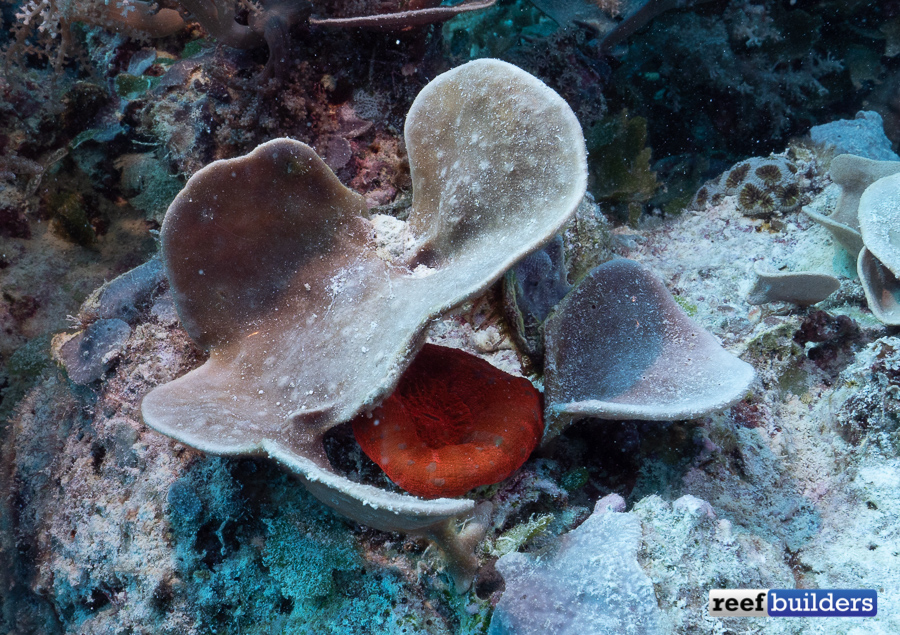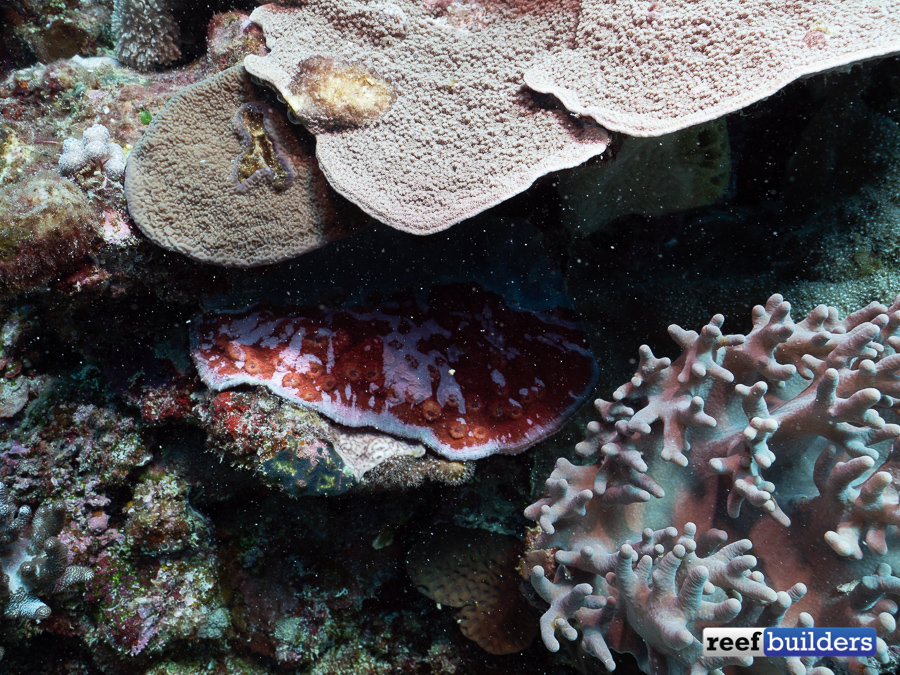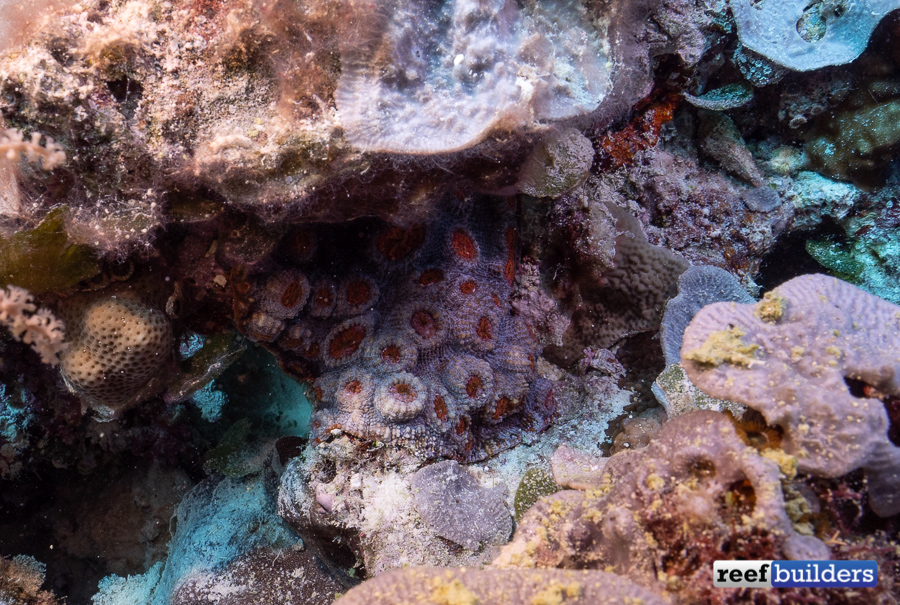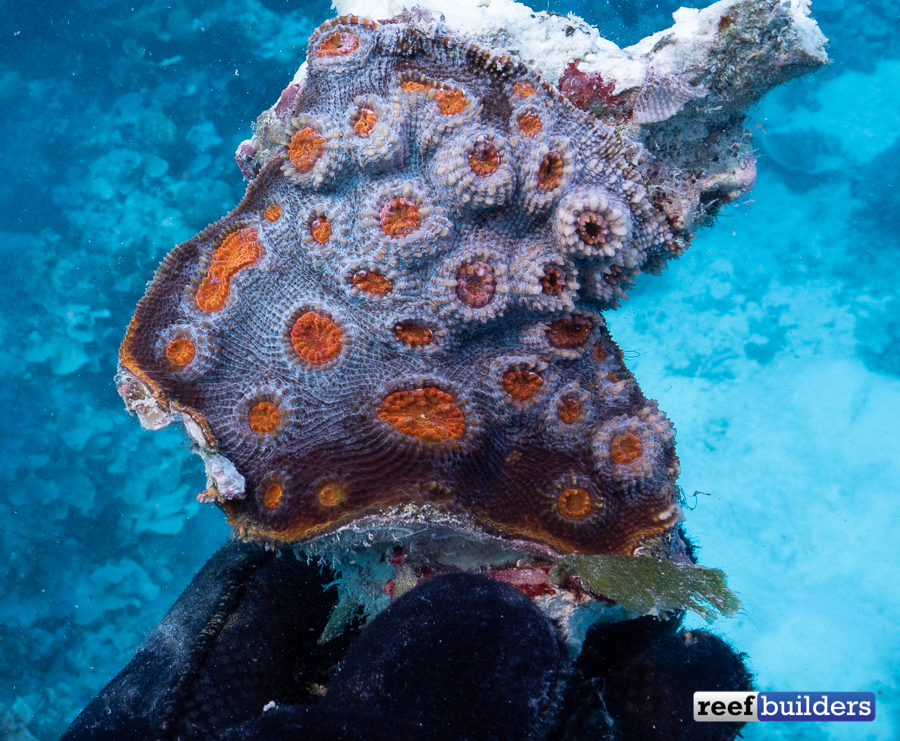There’s a wide range of corals that are considered low light species in the aquarium hobby; these include Corallimorphs, scolies, chalice corals, Leptoseris, Pectinia, and a wide swath of species generalized as LPS corals. There’s a common misconception that low light corals are predominantly found in deeper water and while this might be true of certain habitats, low light corals can actually be found in many different shallow water habitats.
These lower light corals can often be found in very shallow water growing in parts of the reef that are usually shaded such as underneath other light hungry corals, in small caves or overhangs, and sometimes completely upside down where they never receive any direct light. We’ve seen the occasional examples of this in the wild but we documented this countless times on the diverse environments of the Great Barrier Reef.
Where a huge variety and diversity of corals coexist these species will grow wherever they can find some open real estate, and sometimes this is in the unlikeliest of places. Coral hobbyists wouldn’t expect to see chalice corals growing at a depth of 15 feet where the sunlight is very strong, but collectors know that they might be hiding, not in plain view from above, but within the dense matrix of the reef, especially in between the expansive tiers of plating stony corals.
On another occasion we discovered a perfectly round red Homophyllia australis growing pretty much out in the open except for a single frond of reef sponge forming a perfect little shelter for this solitary coral. It’s hard to know the growth rate of the sponge relative to the Scolie in so far as which one started growing on this reef first, but we’d like to think that the sponge was first and the scolymia larvae got really lucky in where it decided to settle out.
Although these sheltered corals might be receiving a predictably lower amount of light, they still experience a similar degree of water flow and nutrients as their more typical reef building neighbors. Normally we advise reef aquarists to set up aquariums with dedicated zones and regions if they want to keep lower light, lower energy corals with faster growing SPS and these examples from the wild reefs demonstrate that it is possible to mix corals with different environmental needs even though it is more challenging to achieve in an aquarium setting.







